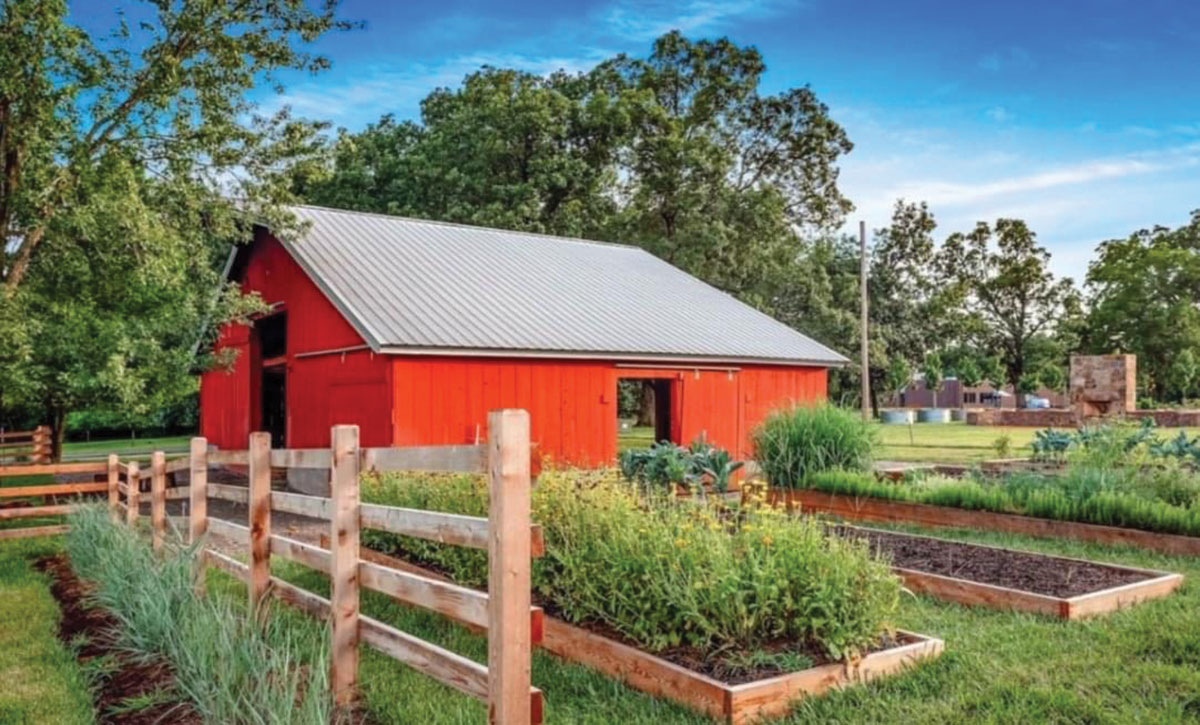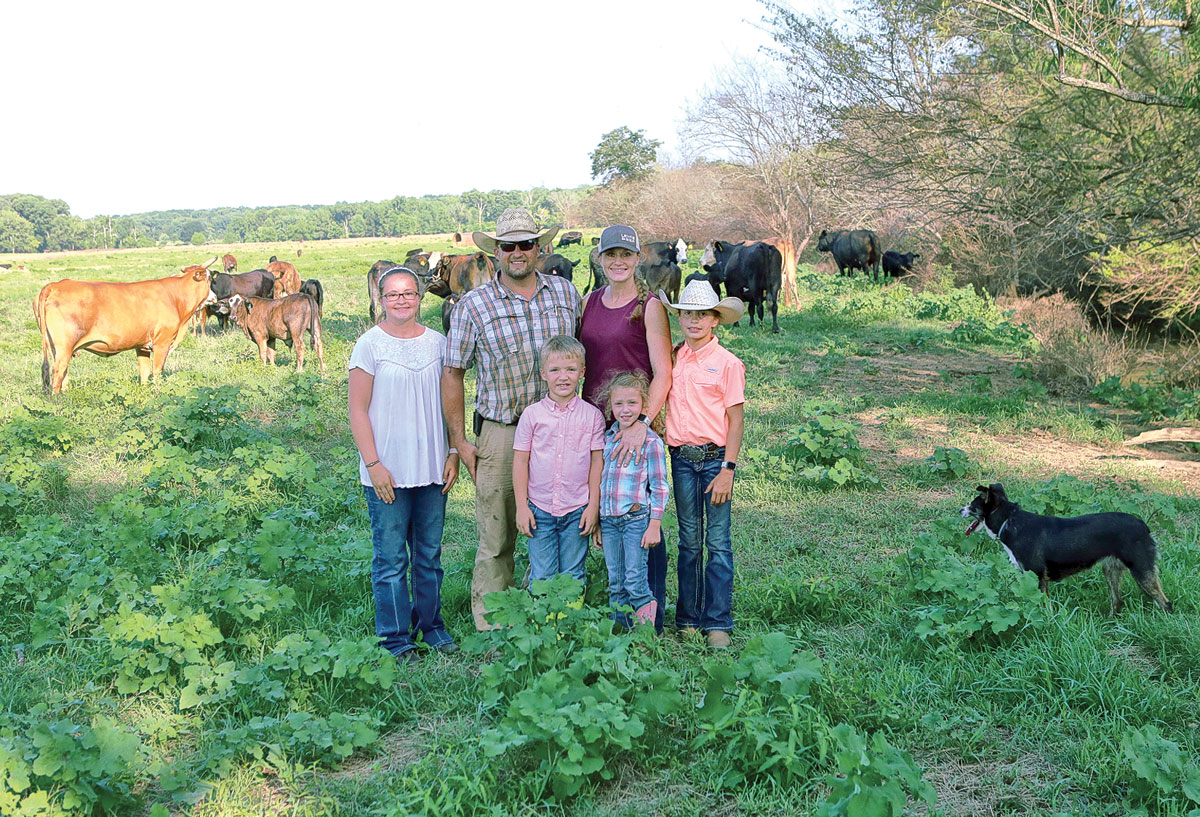
Jeremy Jackson closely monitors the fertility of his Brangus and UltraBlack herd
As far as Jeremy Jackson of Gentry, Ark., knows, the first Jackson to arrive in Benton County Arkansas had land in Bella Vista in the late 1800s.
Jeremy’s son Wyatt and daughter Emily are the sixth generation, with 14-year-old Wyatt headed for a career in agriculture.
The Jackson family history in agriculture is strong, with Jeremy’s grandfather Harold still owning land that Jeremy now uses for hay and heifers. Jeremy’s father Steve lives across the way with his own commercial Brangus operation and partnering with Jeremy on six Tyson broiler houses.
Jeremy’s wife, California-born Michelle, did not come from an agriculture family. Her father Fenton McDonald was a preacher which meant the family moved every five to seven years. During her high school years, the family moved to Washington state where she learned combining in wheat fields and was introduced to beef by working in a butcher department. The couple met when Michelle was at John Brown University. Michelle now works from home as an accounting contractor for JB Hunt.
“She supplies the cash flow to support our family,” Jeremy said with a laugh.
Jeremy runs 55 registered Brangus and UltraBlack mommas, and 25 heifers in different stages of production on 240 acres. UltraBlack cattle are produced through the incorporation of Angus into the Brangus herd. The Jackson’s use JAC’s Ranch Angus bulls for their Angus genetics because of the operation’s attention to producing only the highest-quality Angus genetics.
“We sell a lot of UB1’s first because some people don’t want any cattle with a sheath,” Jeremy said. “A lot of guys who run commercial Angus and Hereford herds really need that Brangus cross and soon discover the sheath typically disappears with the first cross and then come back and buy Brangus.”
Selling bulls is the main income stream for Jeremy’s operation though he also sells a few heifers. Using semen from the top GENETRUST sires, Jeremy uses AI or ET with all of his herd. He has part interest in one bull that was in the top five in registrations the last three years for Brangus. The Jackson’s also purchased the lead-off bull at Chimney Rock last year that produced 1,700 straws of semen in six weeks at 13 and 14 months of age. That bull is currently being used on heifers across the country.
“We use Purina Accuration to develop our bulls,” Jeremy explained. “This is the best product on the market to develop our bulls without pushing them too much.”
Flushing cows is another breeding practice but has general rather than specific criteria. Jeremy maintains that every cow is different and one cow may produce only four usable eggs and three live calves on the ground, while another may produce 20 viable eggs but only one live calf. Generally speaking, if a cow does not produce greater than 50 percent live calves, she is not used for flushing.
“If I’m doing what I am supposed to, my best breeding animals are the youngest so I sell off cows according to their production and use second calf heifers as replacements for my herd.”
Other breeding practices include a recent switch to winter calving at Christmas through the end of February. Jeremy noticed his best calves were born then and are ready for grass when the grass is ready. He also sets up his breeding regimen so heifers calve three weeks before the cows.
Jeremy has a long history of working with the local fire department and finds knowledge he gained as a paramedic helps with managing his herd.
However, he greatly depends upon Landon Watkins at Zoetis and veterinarian Dr. Charles Hatfield in keeping his herd in top condition. Another factor in herd health is his belief in using only Purina products from Powell Feed because it has an excellent line and staying within that line seems efficient and supplements when forage is not excellent. He also uses Purina Availa 4 tubs for conception rate because he believes a few extra calves are worth more than the price of the supplement.
For Jeremy, a cattleman is a grass farmer first with cattle being the commercial byproduct. Consequently, pastures are divided into 10-acre paddocks where livestock eat only the top before being moved to the next paddock.
Pastures are either fescue or Bermuda, with the Bermuda pastures drilled with rye in the fall. He has 70 acres of fescue hay ground. Land health is maintained through the use of chicken litter according to his NCRS nutrition plan and supplemented by a nitrogen application on the Bermuda in the summer. He broadcast sprays for weeds in the spring and spot sprays the timbered edges.
In April, Jeremy hosted his family’s annual field day, which focused on feeder calf profitability sponsored by Zoetis, Purina, Arvest and Adams and Creasy Insurance Agency. The Jackson’s believe in promoting education in the cattle industry and supporting the animals they sell.
For Jeremy, the dollar is in the details and his children often by his side learning just what those details are.






